#salesforce framework
Explore tagged Tumblr posts
Text
Streamlining Business Operations with a Robust Salesforce Org Strategy
Introduction Efficient business operations demand structured workflows and seamless data management. Salesforce, a global leader in CRM platforms, offers tools to enhance organizational performance. Central to this effort is adopting a robust Salesforce Org Strategy, supported by the Salesforce Framework and CRM implementation services.
The Role of Salesforce Org Strategy A Salesforce Org Strategy is not just about setting up the platform; it’s about aligning Salesforce to business objectives. It involves deciding between single or multi-org models, ensuring data security, and defining governance protocols. A clear strategy ensures that your Salesforce implementation scales with your business.
Salesforce Framework in Action The Salesforce Framework provides a foundation for customization and scalability. From workflow automation to app development, this framework ensures that the CRM system evolves alongside business needs. Coupled with the right strategy, it enhances data flow, user adoption, and system performance.
Leveraging CRM Implementation Services Proper implementation is key to realizing Salesforce’s potential. CRM implementation services offer expertise in configuring, integrating, and deploying Salesforce to fit your specific needs. This process reduces the risk of errors and enhances user adoption, ensuring maximum return on investment.
Conclusion A well-defined Salesforce Org Strategy, paired with the Salesforce Framework and expert CRM implementation services, empowers businesses to optimize operations, drive customer engagement, and achieve long-term success.
0 notes
Text
Top 15 Web Development Frameworks in 2023: Exploring the Power of Web Frameworks - Aspire Software Consultancy
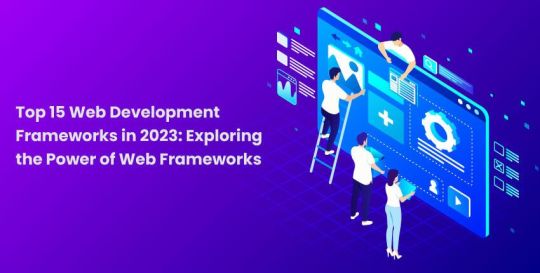
Discover top 15 web development frameworks in 2023 for efficient web apps. Explore React, Angular, Vue.js, backend frameworks, and career insights at Aspire Software Consultancy.
0 notes
Text
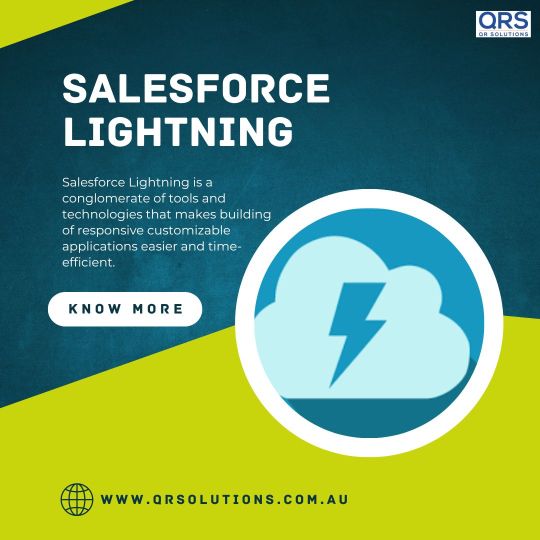
Salesforce Lightning is a conglomerate of tools and technologies that makes building of responsive customizable applications easier and time-efficient.
To know more, visit-https://qrsolutions.com.au/salesforce-lightning-switch-to-salesforce-lightning-this-2019/
#salesforce lightning#salesforce lightning components#salesforce lightning framework#salesforce lightning design system
0 notes
Text
🔘FRIDAY - events from Israel
ISRAEL REALTIME - Connecting to Israel in Realtime
✡️Erev Shabbat - Parshat (Torah portion) Shoftim - Deuteronomy 16:18 - Moses instructs the people of Israel to appoint judges and law enforcement officers in every city. “Justice, justice shall you pursue,” he commands them, and you must administer it without corruption or favoritism.
▪️HAMAS HORROR PROPAGANDA.. during the Shivah, Hamas publishes a video from the captivity of the murdered hostage Hersh Goldberg-Polin, may G-d avenge his blood. Reports the US is upset as this may affect negotiations., the murdered was a US citizen.
▪️SAMARIA - JENIN.. The Arabs report that the IDF forces left the city of Jenin and the Jenin camp area after ten days of military activity. The Mayor of Jenin: The occupation has halted the supply of electricity and water to Jenin. The Palestinian Authority will require external assistance to rebuild Jenin and the Jenin camp. The IDF: "We are continuing the operation in Jenin until its objectives are completed."
▪️TIT-FOR-TAT CONTINUES WITH HEZBOLLAH.. 100 rockets and missiles were launched by Hezbollah at northern Israel yesterday. IDF fighter jets struck more than 10 Hezbollah rocket launchers and other infrastructure across southern Lebanon overnight, per the IDF.
The military says the targets had "posed a threat to Israeli civilians."
▪️1,307 ROCKETS.. were fired at Israel from the north, Lebanon and Syria, amounting to just over 40 a day on average.
▪️ON THE CONSULATE ATTACK IN MUNICH, GERMANY.. official: the shooter in Munich was an Islamist terrorist of Bosnian origin who belonged to the Syrian organization Jabhat al-Nusra.
▪️ON THE ATTORNEY GENERAL SCANDAL.. Amit Segal: Mandelblit's court request for a gag order was rejected.
.. Recordings: how he recognized a strategic consultant as his main opponent - after two years he sent him to false arrest in a far-fetched affair without disqualifying himself. (N12)
▪️ON THE TEACHER UNION HIGH SCHOOL STRIKE.. Against the background of the strike: alternative educational frameworks will be activated starting next week. In a joint initiative of the Ministry of Education, the Ministry of Finance and the Local Government Center to be operated by the local authorities, the ministries agreed on the activation of alternative frameworks for secondary school students.
▪️AI.. Israel has signed the Council of Europe Convention on the Use of Artificial Intelligence. The purpose of the treaty is to ensure that artificial intelligence systems operate while maintaining human rights, democracy and the rule of law, without creating new human rights. The convention applies mainly to artificial intelligence systems used by the public sector, while excluding uses in national security contexts and some of the R&D stages.
▪️ECONOMY.. Salesforce buys the Israeli startup Own for $1.9 billion.
▪️NEWS SOURCES.. Survey: Israelis, what is the main TV channel where you keep up to date about the war? Ch. 12 - 38%, Ch. 14 36%. ( Ch. 13 apparently doesn’t make the list, and sadly neither does Israel Realtime. Did you know you can share us with a friend? Send them the links at the bottom, they click, they join! Special Rosh Chodesh deal
♦️SAMARIA - TUBAS.. IDF carried out three drone strikes against Arab gunmen who were shooting at troops during a raid in the Tubas. Forces began a new raid overnight in Tubas and the nearby Far'a camp, as well as a separate operation in Jericho.
#Israel#October 7#HamasMassacre#Israel/HamasWar#IDF#Gaza#Palestinians#Realtime Israel#Hezbollah#Lebanon
13 notes
·
View notes
Text
Why Salesforce Developers are Unexplained Forces of Business (2023)

According to the company’s own website, Salesforce is known to be the world’s number one customer relationship management (CRM) platform. It is a software whose sole purpose is to help businesses grow by helping them understand the specific needs of their customers by using certain cloud-based apps that are designed for sales, marketing, and service.
However, since no 2 companies are the same, their Salesforce requirements will be different as well. When this takes place, it is usually good to have a top Salesforce development company handy, a company that is well-versed will customise the software development and in providing tailor-made solutions.
If this is something that piques your interest or if you are someone who is already working in Salesforce but would like to up your skills, then this blog is for you.
So What Is A Salesforce Developer?
A Salesforce developer is any person who builds Salesforce applications across different Platform as a Service (PaaS) platforms. However, it is important to keep in mind that he/she does not need to work for Salesforce in any way, shape, or form.
What Do They Do?
A developer dealing in Salesforce has a deep understanding of how it works along with sufficient experience with the platform. A Salesforce developer or a Salesforce development company is hired by an organisation to customise Salesforce to the unique needs of the hiring party. However, it should also be said that the developer can even be someone who is an in-house programmer who has the necessary skills to work with Salesforce. Some of the tools that are used by these developers include Visualforce and Apex and frameworks like Lightning Component.
Roles and Responsibilities of These Developers
One thing that can be easily noticed is that the roles and responsibilities of a Salesforce developer are pretty similar to those of any other professional developer working in a top software development company in India.
However, just for the sake of completeness, here are the roles and responsibilities of these developers:
· Analyse user needs, and then plan, design, test, and develop software that meets their unique needs.
· Come up with effective project plans and develop Salesforce solutions. Also add more value to the 3 stages of project work: definition, development, and deployment.
· Provide useful suggestions regarding software upgrades for existing apps and systems.
· Stay ahead of the transforming technological landscape of Salesforce, and .Net/Java platforms and also adapt quickly.
· Develop every part of any application and then plan how those different parts can mesh together.
· Create programs for use over the internet and for in-house users over the company intranet.
· Properly handle inconsistencies in data and come up with processes that can counter any deficiencies.
· Collaborate with other programmers by creating flowcharts so as to instruct them on how to write additional software code.
· Ensure that a program runs efficiently by performing routine maintenance and testing.
· Keep a record of the inventory of the company’s systems and applications for future reference, especially when it comes to upgrades.
· Team up with other computer specialists to develop optimum software.
Other than the above-mentioned points, one must also remember that a Salesforce developer should always maintain a cordial rapport with the client to understand their operation and Salesforce implementation needs. For example, the developer must make it a point to figure out how the customer is trying to use the software and also identify the core functionality. This means paying extra attention to user needs that go well beyond the scope of the software, issues concerning security, and system performance.
Therefore, you should understand by now that a Salesforce developer has a lot on his/her plate. Their work is extremely challenging, however extremely rewarding as we are going to see below.
What Is The Salary Of A Salesforce Developer?
The average salary of a Salesforce developer in India is somewhere around Rs.500,000 per annum including both profit-sharing and bonuses. It only goes without saying that the bigger the company the more money they will pay for your services. Digital technology solution companies usually pay around Rs.10, 00,000 per annum. Big names in the field like Deloitte and Cognizant pay well above Rs.6, 00,000 per year.
Salesforce developer salaries also vary according to the experience of the individual. An entry-level developer can expect his/her salary to be around Rs.3, 00,000 per annum. However, after gaining an experience of about 2-5 years the compensation can get close to Rs.5, 00,000 per annum. And if someone gains an experience of around 9 years the hefty paycheck can get close to Rs.10, 00,000 per annum.
It is also useful to remember that the salary of a Salesforce developer also varies according to the location of the individual and his/her job as well.
What Are The Benefits Of Hiring A Salesforce Development Team?
The benefits of hiring a dedicated Salesforce development team for your business are many. Let's look at some of these benefits as listed below:
1) Building a core business
One of the best ways of managing your in-house resources is by outsourcing your Salesforce development needs. Instead of having an in-house team, you can find experienced and thorough professionals in the field of Salesforce development taking care of your workload.
2) Skilled expertise
By having a quick look at the portfolio of the companies delivering dedicated Salesforce development services, you can get an idea of their expertise then and there. Therefore, by choosing a dedicated Salesforce team you can be certain of the fact that you have hired people with the right amount of expertise and skill set. They can not only understand your business processes but can also come up with the most apt cloud-based CRM solutions that are tailor-made for your business specifically.
3) 24/7 Availability
Needless a dedicated Salesforce development team will be ready to render their services round the clock. Nowadays, we live in a world where remote working has become the norm, and so have customisations and testing. Therefore, a team that will offer continuous support should always be sought out for. This way, even when the in-house team is sleeping, you will have a team of experts taking care of your CRM.
4) Cost-efficient
You can also save on costs by hiring a dedicated Salesforce development team in India. As a matter of fact, you can save up to 60% of your total costs. You can make use of this saved money to build your core business and pay more attention to business growth.
Nevertheless, here are a few wise words from Josh Kaufman on outsourcing, it goes like this - “For everything we don’t like to do, there’s someone out there who’s good at it, wants to do it, and will enjoy it.”
And that pretty much sums it all up. If you are really looking to get the best benefit from Salesforce, outsourcing is the best thing you can go for.
How to Become a Salesforce Developer?
After such an elaborate discussion on the roles and responsibilities of a Salesforce developer and the hefty compensation that comes with being one, you might ask “But how to actually become a Salesforce developer?” read on to find out about it!!
First, to begin with, most software developers including Salesforce developers have a bachelor’s degree in computer science, and software engineering along with excellent knowledge of computer programming. It is also useful to have knowledge and skills in the industry where these Salesforce skills can be put to the best of use. Moreover, you also need to have an understanding of Model-View-Controller design patterns, Object-Oriented Programming Principles, and Java, or .Net Programming.
Having an internship experience in a software business right after graduating from college also goes a long way. Arrangements like these can provide essential connections, skills, and much-needed experience. If you find it difficult to get a job as a developer, it is recommended to start as a programmer and then slowly work your way up to becoming a Salesforce developer.
In case, you want to become a Salesforce developer after a long time from graduating college, make sure to take an online course focussing on Salesforce development as it can teach you essential skills that are needed to get a job in a Salesforce development company. Certifications like these are crucial as they confirm to employers that you are armed with the skill set needed to do the job they want you to do.
What Are The Skills Required To Become A Successful Salesforce Developer?
In order to become a Salesforce developer there are certain specific skills that one needs to have and they are as follows:
· Analytical Skills: Having sufficient analytical skills assists in analysing the client’s needs and also in developing the requisite software.
· Communication Skills: These come in handy when dealing with customers as it might include explaining to them how an app works. It is also helpful in giving your juniors clear instructions on what needs to be done.
· Computer Skills: It goes without saying that excellent computer skills are a must-have for a Salesforce developer.
· Interpersonal Skills: a good Salesforce developer has to be someone who is doing teamwork at one point or another.
· Problem-solving Skills: This skill is probably the bread and butter of every developer. Being a developer you are in charge of overseeing every stage of the software development, and you can be assured of the fact that there are going to be problems at one stage or another.
In addition, it is also helpful for developers to be detail-oriented and be able to think out of the box. The former means developers need to be creative and in the latter case, a great developer must be able to deal with all the small details.
#SalesforceDeveloper#TechCareers#CRMDevelopment#BusinessSolutions#ITJobs#HiringSalesforce#CodingSkills#DigitalTransformation
2 notes
·
View notes
Text
Salesforce DevOps for Developers
Salesforce DevOps is essential for organizations using the Salesforce platform because it enables efficient and collaborative development, seamless deployment, and effective management of Salesforce applications.
Here are some key reasons why Salesforce DevOps is important:
Collaboration: Salesforce DevOps promotes collaboration among developers, administrators, and stakeholders involved in the application development and deployment process. It provides a structured framework for teams to work together, share code, track changes, and manage releases, leading to better teamwork and streamlined development workflows.
Continuous Integration and Deployment: DevOps practices enable continuous integration and deployment, allowing organizations to deliver updates and enhancements to Salesforce applications more frequently and reliably. By automating build, test, and deployment processes, organizations can reduce manual errors, accelerate release cycles, and ensure consistent quality.
Version Control: Salesforce DevOps facilitates version control, allowing developers to track changes to their code and metadata over time. This helps in managing multiple development branches, reviewing changes, reverting to previous versions if needed, and maintaining a history of changes for auditing purposes.
Quality Assurance: DevOps practices, such as automated testing, ensure the quality and stability of Salesforce applications. By automating test cases, organizations can validate changes, identify bugs or issues early in the development process, and deliver high-quality applications to end-users.
Scalability and Efficiency: Salesforce DevOps enables organizations to scale their development processes and efficiently manage multiple Salesforce orgs, sandboxes, and environments. With automation and standardization, organizations can easily replicate environments, streamline deployment processes, and handle increased development and deployment demands.
Risk Mitigation: DevOps practices help mitigate risks associated with deploying changes to production environments. By implementing practices like continuous integration, automated testing, and incremental deployments, organizations can minimize the impact of potential issues or errors, ensuring a smooth and controlled release process.
Continuous Improvement: Salesforce DevOps emphasizes a culture of continuous improvement, where organizations can gather feedback, monitor performance, and make data-driven decisions to enhance their applications and development processes over time. It enables organizations to iterate and evolve their applications based on user needs and market demands.
Overall, Salesforce DevOps aligns development, operations, and business objectives, enabling organizations to deliver high-quality applications faster, reduce time-to-market, and enhance the overall user experience. It improves collaboration, efficiency, and agility, making it an essential practice for successful Salesforce application development and management.
#salesforce
#salesforce #CRM #startups#salesforce partner#technology#salesforce integration#SalesforceConsultant#getoncrm
2 notes
·
View notes
Text
Debunking Myths About Generative AI
Generative AI is unique in the swiftly changing tech landscape due to its incredible transformative potential. Just months after making headlines, it’s already challenging business leaders to rethink their operations and strategies.
Unlike other emerging technologies, generative AI offers not only enhanced performance but also scalability that can be implemented across an organization with remarkable speed. This technology has the power to significantly boost productivity, increase short-term profits, and enable new business models, such as hyperpersonalization, that were previously deemed too costly.
However, misconceptions about generative AI may be holding businesses back from fully embracing its benefits. In this blog, we’ll debunk common myths about generative AI that may be preventing you from taking full advantage of its transformative capabilities.
Myth #1: GenAI Won't Impact My Business :
Generative AI is already making its way into your organization, whether you realize it or not. Many employees may be using available generative AI tools, and major software providers like Google, Microsoft, and Salesforce are integrating these capabilities into their applications. Without proper guidance and governance, employees may misuse these tools, leading to security and compliance issues. XLNC Technologies helps businesses navigate these challenges by implementing AI governance frameworks to ensure responsible adoption.
Myth #2: Generative AI Is Too New and Risky:
Generative AI has been around for years, but it’s only recently gained the power and accessibility to capture business interest. While there are risks, such as "hallucinations," data breaches, and legal concerns, these can be managed. Implementing a solid responsible AI framework is essential to address risks across the entire generative AI lifecycle, from strategic planning to governance and compliance. As generative AI becomes integrated into your organization, establishing safeguards and ethical practices from the start is crucial.
Myth #3: We Must Take a Slow Approach:
While generative AI is vast, the key is to adopt a bold mindset from the start. Imagine the productivity boost if your knowledge workers became 30-40% more efficient. Rather than deploying generative AI everywhere at once, begin with a few targeted capabilities. It's essential to establish a framework that includes governance, tools, skills, cloud capabilities, and APIs to replicate and scale these innovations efficiently. XLNC Technologies specializes in helping businesses develop structured AI strategies that accelerate adoption while maintaining security and efficiency.
Myth #4: Generative AI Will Replace Employees:
Generative AI functions as a prediction tool, learning from past examples of human language and software code. With the right prompts, it can forecast the next words or code snippets, helping generate new content, troubleshoot existing work, and provide quicker access to data. However, it lacks true understanding and creativity. Instead, generative AI enhances productivity significantly—provided your team is trained to utilize it effectively and adapt their workflows. Many employees may be receptive to this change, even finding it exciting.
Myth #5: We Don’t Need GenAI for Our Digital Transformation:
Ignoring generative AI in your digital transformation can lead to missed cost savings and efficiency opportunities. As you migrate data to a cloud-native environment, generative AI can automate processes and improve access to unstructured data. It provides user-friendly Q&A and analytics, making it easier for all employees—regardless of data expertise—to leverage information effectively. Furthermore, generative AI can enhance transformation efforts in cybersecurity, finance, supply chain management, tax compliance, and marketing by streamlining data access and analysis.
Conclusion
While the rise of generative AI is inevitable, companies must act quickly to address existing constraints. With a shortage of microchips and a lack of employee knowledge hindering widespread adoption, organizations must prioritize upskilling and innovation. Hardware advancements are underway, and as training progresses, those who adapt will thrive while others may fall behind.
XLNC Technologies empowers businesses to rethink how their workforce can leverage generative AI to enhance productivity and access valuable insights. By embracing this technology now, your company can position itself as a leader in the evolving business landscape created by generative AI.
#GenerativeAI#AITransformation#DigitalInnovation#AIAutomation#ArtificialIntelligence#AIForBusiness#Innovation
0 notes
Text
The Hidden Complexities Of Salesforce Data Migration
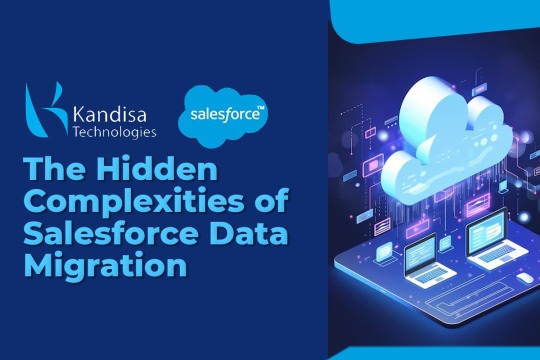
Data migration is far more than a simple transfer of information. When organizations approach Salesforce deployment, they often underestimate the intricate process of moving data from legacy systems to a new, dynamic platform.
The Migration Landscape
Successful data migration begins with comprehensive preparation. Organizations must invest time in understanding their data ecosystem and preparing for a seamless transition.
Key preparatory elements include-
Conducting a thorough data audit
Mapping existing data structures
Identifying potential migration challenges
Establishing clear migration objectives
Creating a detailed transformation strategy
The complexity of data migration goes beyond technical challenges. It requires a strategic approach that balances technical precision with business objectives, ensuring that every piece of data serves a meaningful purpose in the new Salesforce environment.
The Five-Stage Migration Framework
Stage 1
Discovery and Assessment
The initial stage focuses on understanding both source and target systems-
· Conducting comprehensive system audits
· Creating detailed data inventory
· Identifying data relationships and dependencies
· Assessing data quality and completeness
· Establishing migration scope and requirements
Stage 2
Planning and Design
This stage establishes the strategic foundation-
· Developing detailed migration architecture
· Creating field and object mapping documents
· Establishing transformation rules
· Designing backup and rollback procedures
· Setting up validation criteria and success metrics
Stage 3
Data Preparation and Backup
Critical pre-migration activities include-
· Performing full system backup of source data
· Cleaning and standardizing data
· Removing duplicates and redundant information
· Creating backup verification procedures · Establishing disaster recovery protocols
Stage 4
Execution and Migration
The actual migration process involves
· Running test migrations in sandbox environments · Performing incremental data loads
Get More info: https://kandisatech.com/blog-details/The-Hidden-Complexities-of-Salesforce-Data-Migration
#Salesforce#DataMigration#BusinessGrowth#SalesforceDataMigration#salescloud#sfdc#salesforcelearning#CRM#salesforceconsultant#salesforcedevelopers#salesforcepartner
0 notes
Text
Step-by-Step Guide to a Smooth Salesforce Implementation: Best Practices for Success
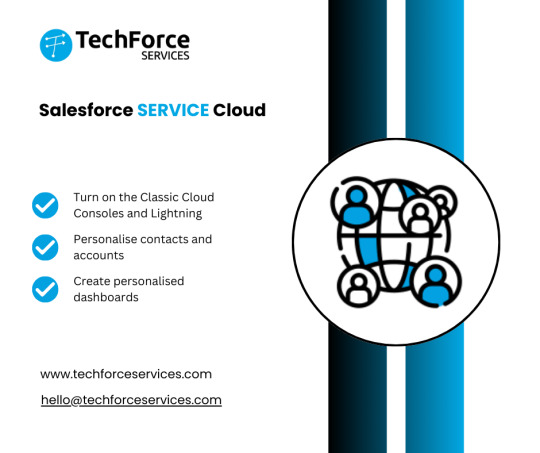
Implementing Salesforce can be transformative, but it requires careful planning and execution. For businesses aiming to streamline operations, enhance customer relationship management (CRM), and drive revenue, Salesforce is a powerhouse. However, achieving these benefits often hinges on a well-executed implementation plan that avoids common pitfalls and leverages best practices.
Here’s a step-by-step guide to a smooth Salesforce implementation using a tried-and-true framework with insights from TechForce Services, an experienced Salesforce implementation partner.
Step 1: Define Clear Objectives
Before diving into implementation, begin by establishing your objectives. What do you want Salesforce to achieve for your business? Setting clear, measurable goals will help you stay focused and aligned throughout the process. Are you aiming to improve customer data management, enhance sales processes, or optimize marketing campaigns? The answers to these questions form the foundation of your Salesforce framework.
Key objectives might include:
Improving customer service efficiency
Increasing cross-functional collaboration
Enhancing data visibility for informed decision-making
Boosting sales productivity and forecasting accuracy
Step 2: Assemble the Right Implementation Team
Next, build a team that includes key stakeholders from each department that will use Salesforce. This might include sales, marketing, customer support, and IT. It’s equally crucial to choose a project manager who will oversee the entire implementation process. TechForce Services, as your Salesforce implementation partner, can bring experience and insights to avoid common issues and streamline the transition.
In addition to your in-house team, consider hiring TechForce Services, which specializes in Salesforce implementations. As a partner, they bring technical expertise, guidance on best practices, and support with complex configurations. Selecting the right partner is essential, so evaluate their experience, success stories, and industry expertise to ensure they fit your needs.
Step 3: Plan and Outline the Salesforce Framework
An organized Salesforce framework is key to keeping the project on track. Start by mapping out a timeline with milestones, deliverables, and deadlines. Include:
Data migration strategy
Customization requirements
Integration points with existing systems
User training and support
In your planning, account for future scalability. Ensure the system is flexible enough to adapt to changes in your business, such as increased data or added functionalities. The best implementation frameworks are built with flexibility, scalability, and future growth in mind, and TechForce Services can guide you in designing a robust and future-ready framework.
Step 4: Data Migration and Cleaning
One of the most difficult parts of using Salesforce is frequently data migration.Before importing data into Salesforce, ensure your data is clean, organized, and accurate. Incomplete or duplicate data can hinder adoption and decrease user trust in the system.
Data Assessment: Review your existing data to identify any gaps or inaccuracies.
Data Cleaning: Eliminate duplicate or outdated information.
Data Structuring: Organize data to align with Salesforce’s data model.
Data Migration: Use Salesforce’s import tools or work with TechForce Services to move data seamlessly.
A well-structured data migration plan is crucial for a smooth Salesforce implementation. Engaging both your IT team and TechForce Services ensures a seamless transition.
Step 5: Customize to Fit Business Needs
Salesforce’s flexibility is one of its greatest assets. It allows you to customize features, workflows, dashboards, and reports according to your unique business requirements. However, avoid over-customizing, as this can lead to increased complexity and potential issues in maintenance and future upgrades.
Key areas for customization include:
Workflow Automation: Increase efficiency by automating repetitive operations.
Custom Fields: Tailor fields to capture the specific data your teams need.
Dashboards and Reports: Set up customized dashboards and reports to track KPIs.
Remember, customization is meant to serve your objectives, not overcomplicate them. A good Salesforce implementation partner like TechForce Services can help identify where customization adds value versus where it could complicate the framework.
Step 6: Integrate with Existing Systems
One of the key strengths of Salesforce is its ability to integrate with other software. Whether it’s ERP, e-commerce, or marketing automation tools, Salesforce can be configured to communicate with various systems. Successful integration ensures that data flows smoothly between systems, creating a single source of truth for customer information.
Work with TechForce Services to map out integration requirements and address potential challenges. Consider data flow, security, and API capabilities to make sure integrations work seamlessly within your Salesforce framework.
Step 7: User Training and Adoption
For any software implementation to succeed, users need to understand how to use it effectively. Begin by designing a training program that suits your team’s needs, ensuring they feel confident navigating and utilizing Salesforce to its full potential.
Best practices for user training:
Conduct role-based training sessions to teach users the features most relevant to their daily work.
Create a knowledge base with reference materials, FAQs, and tutorials.
Encourage hands-on practice to allow users to get comfortable with the system.
A smooth Salesforce implementation isn’t complete without high adoption rates, so invest in training and communicate the benefits to your team. TechForce Services can offer training resources and guidance to ensure a smooth transition.
Step 8: Test Thoroughly and Launch
Before going live, conduct extensive testing to make sure everything works as expected. Testing should include all features, customizations, and integrations within your Salesforce framework. Use scenarios that simulate real-world use to uncover any potential issues.
Testing best practices:
Conduct user acceptance testing (UAT) to confirm that the system meets business needs.
Identify and fix any issues that surface during testing.
Communicate the testing phase results with your team to ensure everyone is aware of system capabilities.
Once testing is complete and issues are resolved, you’re ready for a smooth launch. Ensure that all users are informed of the go-live date and understand any next steps.
Step 9: Monitor and Optimize
After implementation, the work isn’t over. Regular monitoring will help identify any performance issues, user challenges, or opportunities for improvement. Schedule periodic reviews to assess if the system continues to meet business objectives. Many businesses choose to engage their Salesforce implementation partner for ongoing support to help optimize features and make necessary adjustments.
Some monitoring and optimization practices include:
Regularly reviewing dashboards and reports to assess KPIs.
Obtaining consumer input in order to determine possible enhancements.
Staying updated on Salesforce releases for new features and functionalities.
Conclusion
A well-planned Salesforce implementation is a step toward transforming customer relationships and improving business efficiency. By following these steps—defining objectives, assembling the right team, planning a robust Salesforce framework, ensuring data quality, customizing wisely, integrating seamlessly, training thoroughly, and monitoring regularly—you’ll set the stage for success.
Partnering with experienced Salesforce implementation partners can also bring invaluable expertise and guidance. Taking these steps will help you make the most of your Salesforce investment, positioning your organization for long-term growth and success.
0 notes
Text
Salesforce DevOps Certification | Salesforce DevOps Training
What Are the Best Tools to Enhance Your Salesforce DevOps Pipeline?
Salesforce DevOps Training fast-paced digital landscape, businesses rely heavily on Salesforce to manage their customer relationships and drive sales. To keep up with evolving customer needs and market demands, organizations need to deliver Salesforce customizations and updates quickly and efficiently. This is where Salesforce DevOps comes into play. A robust Salesforce DevOps pipeline streamlines the development, testing, and deployment processes, enabling teams to deliver high-quality releases with increased speed and reduced risk. However, building and maintaining an effective pipeline requires the right tools.
Why is a Salesforce DevOps Pipeline Important?
A well-defined Salesforce DevOps pipeline offers numerous benefits, including:
Faster Release Cycles: Automating key processes reduces manual effort and accelerates the delivery of new features and updates.
Improved Quality: Continuous integration and continuous testing help identify and resolve issues early in the development cycle, leading to higher quality releases.
Reduced Risk: Automated deployments minimize the chances of human error and ensure consistent and reliable releases.
Increased Collaboration: DevOps promotes collaboration between development, operations, and testing teams, fostering better communication and shared responsibility.
Enhanced Agility: A streamlined pipeline allows organizations to respond quickly to changing business requirements and market conditions.
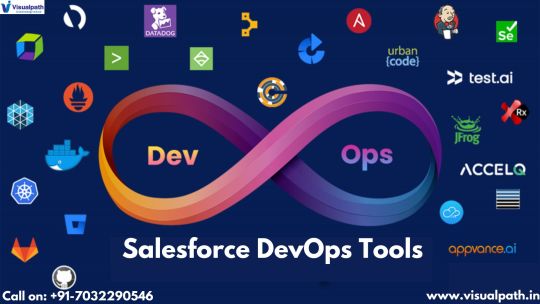
Key Components of a Salesforce DevOps Pipeline:
A typical Salesforce DevOps pipeline includes the following stages:
Development: Developers work on features in isolated sandboxes.
Version Control: Changes are tracked and managed using a version control system.
Continuous Integration: Code changes are integrated frequently and automatically.
Automated Testing: Unit, integration, and user acceptance tests are executed automatically.
Release Management: Releases are planned and managed.
Deployment: Changes are deployed to different environments (e.g., staging, production).
Monitoring: The health and performance of the deployed application are monitored.
Best Tools to Enhance Your Salesforce DevOps Pipeline:
Choosing Salesforce DevOps Certification the right tools is crucial for building an effective Salesforce DevOps pipeline. Here are some of the best tools available:
1. Version Control Systems:
Git: The industry standard for version control, Git enables teams to track changes, collaborate effectively, and revert to previous versions if needed. Platforms like GitHub, GitLab, and Bitbucket provide hosting and management for Git repositories.
2. Continuous Integration and Continuous Delivery (CI/CD) Tools:
Jenkins: An open-source automation server that can be used to build, test, and deploy Salesforce applications. Jenkins integrates with various other tools and provides a flexible platform for building custom pipelines.
Azure DevOps: A cloud-based service that provides a comprehensive suite of DevOps tools, including CI/CD pipelines, version control, and testing capabilities.
CircleCI: A cloud-based CI/CD platform that offers fast and reliable builds and deployments. It integrates seamlessly with Salesforce and supports automated testing.
Copado: A low-code DevOps platform specifically designed for Salesforce. It simplifies the process of building and managing Salesforce pipelines and provides features like automated deployments, rollback capabilities, and compliance tracking.
Flosum: Another dedicated Salesforce DevOps Course platform that offers similar features to Copado, including release management, automated testing, and environment management.
3. Automated Testing Tools:
Apex Test Framework: Salesforce's built-in testing framework for writing unit tests for Apex code.
Selenium: A popular open-source framework for automating web browser interactions. Selenium can be used to automate UI tests for Salesforce applications.
Provar: A testing tool specifically designed for Salesforce, offering end-to-end testing capabilities, including UI testing, API testing, and data testing.
4. Deployment Tools:
SFDX CLI: Salesforce's command-line interface, which provides a powerful way to automate deployments and manage Salesforce orgs.
Ant Migration Tool: A Java-based tool for migrating metadata between Salesforce orgs. While older, it's still used in some scenarios.
5. Monitoring Tools:
Salesforce Platform Events: A real-time event messaging system that can be used to monitor the health and performance of Salesforce applications.
New Relic: A cloud-based monitoring platform that provides insights into the performance of Salesforce DevOps Online Training applications and infrastructure.
AppDynamics: Another application performance monitoring (APM) tool that can be used to monitor Salesforce performance and identify bottlenecks.
6. Static Code Analysis Tools:
PMD: An open-source static code analyzer that can be used to identify potential code issues in Apex and Visualforce.
Checkmarx: A commercial static code analysis tool that provides comprehensive security analysis for Salesforce applications.
Choosing the Right Tools:
The best tools for your Salesforce DevOps pipeline will depend on your specific needs and requirements. Consider factors like team size, budget, complexity of your Salesforce implementations, and desired level of automation when making your decisions. Often, a combination of tools will be required to create a complete and effective pipeline.
Conclusion:
A well-implemented Salesforce DevOps pipeline is essential for organizations looking to deliver high-quality Salesforce applications quickly and efficiently. By leveraging the right tools, teams can automate key processes, improve collaboration, and reduce risk. Investing in the right tools and establishing a robust DevOps culture will enable your organization to maximize the value of your Salesforce investment and stay ahead of the competition. Remember to evaluate your needs and choose tools that integrate seamlessly and support your specific Salesforce development lifecycle.
Visualpath is the Leading and Best Software Online Training Institute in Hyderabad. Avail complete Salesforce DevOps Course Worldwide. You will get the best course at an affordable cost.
Attend Free Demo
Call on - +91-7032290546
WhatsApp: https://wa.me/c/917032290546
Visit: https://www.visualpath.in/online-salesforce-devops-training.htmlVisit Blog: https://visualpathblogs.com/category/salesforce-devops-with-copado/
#Salesforce DevOps Training#Salesforce DevOps Course#Salesforce DevOps Certification#Salesforce DevOps Online Training#Salesforce DevOps Training In Hyderabad#Salesforce DevOps With Copado Training#Salesforce DevOps Online Training Hyderabad#Salesforce DevOps Online Courses#Salesforce DevOps Training in Ameerpet#Salesforce DevOps Training in Bangalore#Salesforce DevOps Training in India
0 notes
Text
Hubert Palan, Founder and CEO of Productboard – Interview Series
New Post has been published on https://thedigitalinsider.com/hubert-palan-founder-and-ceo-of-productboard-interview-series/
Hubert Palan, Founder and CEO of Productboard – Interview Series


Hubert Palan is the Founder and CEO of Productboard, a product management platform designed to help teams bring products to market more efficiently by prioritizing user needs and aligning teams around a shared roadmap. More than 5,400 companies, including Zoom, UiPath, JCDecaux, and Microsoft, use the platform to gather customer insights and inform development decisions.
What inspired you to start Productboard, and how did your experience at GoodData influence its creation?
Productboard was inspired by my work as a product manager and product leader. The idea came during a flight when I was trying to manage product roadmaps across various presentations and spec sheets while on less-than-optimal airplane Wi-Fi — making it obvious how inefficient it is to try and coordinate strategic product decisions without a single, consistently-updated source of truth.
When creating Productboard, our goal was to build one platform that covers the entire product management process, solving even more PM pain points along the way. Productboard has now grown into a platform that puts customer centricity at the center of modern product management, using AI technology to champion the voice of the customer, elevating the role of the PM.
And it’s worked. Today Productboard has 6000+ customers including amazing companies like Salesforce, Autodesk, and Zoom.
What challenges did you face during the early days of Productboard, and how did you overcome them?
In the early days of Productboard, I learned about the challenges of onboarding new staff at a startup. Productboard was moving very quickly and I had a tendency to expect new hires to catch onto what we were doing almost immediately and make clear, strategic decisions right away. Since then, I’ve learned that there’s more value in taking your time with onboarding. By focusing on effective knowledge sharing and training, you can foster teams that are just as informed and passionate about the work as you are. The ROI on a thorough onboarding period is substantial.
What is the “Product Excellence Framework,” and how did you develop it as a foundational concept for Productboard?
The Product Excellence Framework is our structured approach to product management, emphasizing customer-centricity, placing big bets, and building amazing teams. It’s our product philosophy at Productboard, ensuring that we’re always focused on delivering value to our customers. We developed this framework after recognizing common challenges faced by product teams, such as the need to consolidate feedback, prioritize effectively, and align everyone around a clear roadmap. It’s a core part of our mission to help product managers navigate the complexities of building modern products, especially in the age of AI.
Productboard uses AI to analyze customer feedback at scale. What motivated you to incorporate AI into your platform, and how has it transformed product management?
Something that became clear to our team early on was a pressing need to help product teams make sense of the massive amounts of customer feedback they receive. AI was the natural solution to analyze this data at scale, identify key insights, and help prioritize what to build next. This has transformed product management by allowing teams to make quicker, more informed decisions with greater confidence. It has also elevated the PM to a position of leadership in which they can give more strategic feedback that aligns with a company’s business goals. Overall, AI in PM is about staying ahead of the curve and ensuring our customers can build products that keep up with emerging trends and truly resonate with their users.
Can you share specific examples of how AI has improved decision-making for Productboard’s customers?
Imagine a product manager wants to understand the general sentiment on a new feature. Instead of sifting through mountains of data across Salesforce, social media, the Apple Store, and who knows what else, they can just use Productboard. Productboard Pulse’s AI-powered conversational interface instantly answers questions like, “What are customers saying about the last update?” or “Is pricing a major concern for users in this sector?” This access allows PMs to quickly identify pain points and opportunities, leading to more effective product development.
Beyond Pulse, we also have an AI-powered analytics dashboard that automatically surfaces key themes and trends from customer feedback. This helps product managers prioritize features with the biggest potential impact, making it a game-changer for data-driven decision-making. We’re seeing customers use these insights to accelerate time-to-market, improve product satisfaction, and ultimately, build better products that people love.
How do you address concerns around data security and privacy when using AI to process customer insights?
We take privacy very seriously. At Productboard we use a multi-layered approach to data security and privacy, incorporating industry-standard practices and robust measures to protect sensitive information. Our commitment to security is evident in our SOC 2 Type II compliance certification and our adherence to strict data protection regulations like GDPR and CCPA.
We employ data encryption, and our platform is built on secure infrastructure. We also implement application-level security measures, including user authentication, authorization, and access controls, to prevent unauthorized access to customer data. Our customers have granular control over their data, allowing them to determine what information is collected and how it is used. For AI specifically, we employ anonymous data to analyze customer feedback, protecting individual identities while extracting valuable insights.
What trends do you foresee in the use of AI for product management, and how is Productboard preparing to lead in this space?
AI will be essential for product managers to navigate the complexities of the modern product landscape. Using AI in PM is not just about automating tasks; it’s about empowering PMs to be more strategic and customer-centric, thus elevating the impact they can have within their respective companies.
At Productboard, we’re committed to leading the way in AI-powered product management. We’re continuously enhancing our AI capabilities and delivering innovative solutions that empower our customers. Last year, we announced several iterations of our AI applications and there’s more where that came from in 2025.
Our goal is to make AI accessible and beneficial for all product teams, regardless of their size or technical expertise. We believe that by embracing AI, PMs can unlock new levels of productivity, creativity, and customer-centricity and become more integral within their organizations.
How has your leadership style evolved as Productboard has grown from a small team to an international organization with over 6,000 customers?
Early on, I adopted a very hands-on leadership style — wearing multiple hats, and figuring things out as we went along. As we expanded, I had to learn to delegate more effectively, trust my team, and empower them to take ownership.
However, even with the importance of letting go, I also learned the importance of staying connected and maintaining a founder’s mindset. I am constantly questioning, analyzing, and seeking ways to improve. Effective leadership is about balancing strategic vision with a deep understanding of the day-to-day realities of our customers and our team.
What advice would you give to aspiring product managers who want to leverage AI in their roles?
I would encourage aspiring product magnets to learn how to leverage AI effectively by following these three best practices:
Develop Customer-Centricity: Always connect AI-driven insights back to the human needs and pain points they represent.
Seek Mentorship and Collaboration: Connect with experienced product managers who are already leveraging AI in their roles. Learn from their successes and challenges, and ask for guidance on how to navigate the evolving landscape.
Embrace Continuous Learning: AI is a dynamic field, so stay curious and keep learning. Explore online courses, attend workshops, and read about the industry to deepen your understanding of AI concepts and applications in product management.
What is your long-term vision for Productboard, particularly in leveraging AI to enhance customer-centric product development?
My goal for productboard now is the same as it was day one – to solve PM pain points and empower PMs to make the best products possible.
We’re committed to consistently evaluating and updating our AI offerings to ensure we’re helping PMs be more collaborative, effective, creative and strategic. As their pain points change, so will our technology. In fact, we use Productboard’s technology ourselves to make sure we’re being truly customer-centric and delivering the updates and features that our customers really need. So it’s hard to say today what we’ll do in the future, because at Productboard, it’s all about what our customers need right now. But I can promise that we’ll continue to evolve and leverage AI to provide for our customers and empower PMs to be exceptional members of their organization.
Thank you for the great interview, readers who wish to learn more should visit Productboard.
#000#2025#Advice#ai#AI technology#AI-powered#amazing#Analytics#apple#applications#approach#authentication#Best Products#Building#Business#business goals#ccpa#CEO#certification#change#Collaboration#collaborative#Companies#compliance#continuous#courses#creativity#customer data#dashboard#data
0 notes
Text
Configure Price and Quote (CPQ), 2024-2028, Asia
In today's fast-paced business environment, Configure Price and Quote (CPQ) solutions have become a critical asset for companies looking to streamline their sales processes. The Configure Price and Quote (CPQ) Market Forecast for 2024-2028 in Asia highlights significant growth driven by increasing digital transformation, automation, and AI-driven pricing strategies. Businesses across various industries, including manufacturing, IT services, and telecommunications, are adopting CPQ solutions to enhance sales efficiency and improve customer experience. Companies like QKS Group are at the forefront of driving this market evolution.
Market Growth and Trends
The Configure Price and Quote (CPQ) Market Forecast suggests that Asia's CPQ market is poised for rapid expansion, with a compound annual growth rate (CAGR) exceeding 12% during 2024-2028. This growth is fueled by the rising demand for automation in sales operations, the need for personalized pricing, and the integration of AI and machine learning in quote management. Emerging economies like India, China, and Southeast Asian nations are expected to witness the highest adoption rates due to their expanding digital infrastructure and increasing enterprise IT spending.
Key Market Drivers
Digital Transformation Initiatives: Organizations in Asia are heavily investing in cloud-based CPQ solutions to modernize their sales processes. This shift is particularly noticeable in industries such as e-commerce, manufacturing, and financial services.
AI and Automation Integration: Advanced CPQ platforms now leverage AI-powered analytics to generate accurate quotes, optimize pricing strategies, and ensure compliance with company policies. These capabilities help businesses gain a competitive edge in dynamic markets.
Rising Demand for Subscription-Based Pricing Models: With the growth of SaaS and cloud-based services, many businesses are transitioning to subscription models, increasing the need for CPQ solutions that can manage recurring revenue and complex pricing structures.
Increased Adoption in SMEs: While large enterprises have been early adopters of CPQ, small and medium-sized enterprises (SMEs) in Asia are now recognizing its value in reducing manual errors and accelerating sales cycles.
Challenges in the CPQ Market
Despite strong growth projections, the Configure Price and Quote (CPQ) Market Forecast identifies certain challenges that could hinder widespread adoption:
Implementation Complexity: Integrating CPQ solutions with existing enterprise resource planning (ERP) and customer relationship management (CRM) systems can be challenging, requiring significant time and investment.
High Initial Costs: While CPQ solutions ultimately improve efficiency, the upfront cost of deployment and customization may deter smaller businesses from immediate adoption.
Regional Regulatory Compliance: Businesses operating in different Asian markets must navigate varying regulatory frameworks, requiring CPQ solutions to be highly adaptable and compliant with local laws.
Regional Insights
China: Leading the CPQ market growth in Asia, China’s rapid digital transformation, strong industrial base, and e-commerce boom are fueling demand for CPQ solutions.
India: With a thriving startup ecosystem and a growing IT sector, India is emerging as a key player in CPQ adoption, particularly in SaaS-based businesses.
Southeast Asia: Countries like Singapore, Indonesia, and Malaysia are witnessing increased CPQ adoption, driven by government initiatives supporting digitalization and smart manufacturing.
Japan & South Korea: These markets are characterized by advanced technological infrastructure and strong enterprise IT investments, further accelerating CPQ deployment.
Competitive Landscape
The CPQ market in Asia is becoming increasingly competitive, with both global and regional players vying for market share. Companies like Salesforce, Oracle, and SAP are expanding their presence in the region, while local providers, including QKS Group, are offering specialized solutions tailored to the unique needs of Asian businesses. The competition is pushing innovation in CPQ solutions, with enhanced AI-driven analytics, improved integrations, and industry-specific customization.
Future Outlook
The Configure Price and Quote (CPQ) Market Forecast for 2024-2028 indicates that CPQ solutions will continue to evolve, driven by emerging technologies such as generative AI, blockchain for contract management, and deeper CRM-CPQ-ERP integrations. As businesses across Asia strive to enhance sales efficiency and pricing accuracy, CPQ adoption will accelerate, further transforming the B2B sales landscape.
In conclusion, the CPQ market in Asia is set for robust growth, driven by digital transformation, automation, and increasing demand for AI-driven pricing solutions. With key players like QKS Group contributing to this evolution, businesses can expect more streamlined and intelligent sales operations in the coming years. Organizations looking to stay ahead in the competitive market should consider investing in CPQ solutions to optimize their sales processes and improve customer engagement.
0 notes
Text
How to Build Custom Apps on Salesforce Using Lightning Web Components (LWC)

Salesforce is a leading platform in cloud-based customer relationship management (CRM), and one of its standout features is the ability to create custom apps tailored to an organization's specific needs. With the introduction of Lightning Web Components (LWC), Salesforce developers can now build faster, more efficient, and more powerful custom applications that integrate seamlessly with the Salesforce ecosystem.
In this blog, we’ll walk you through the process of building custom apps on Salesforce using Lightning Web Components.
What Are Lightning Web Components (LWC)?
Before diving into the development process, let’s briefly explain what Lightning Web Components are. LWC is a modern, standards-based JavaScript framework built on web components, enabling developers to build reusable and customizable components for Salesforce apps. It is faster and more efficient than its predecessor, Aura components, because it is built on native browser features and embraces modern web standards.
Why Use LWC for Custom Apps on Salesforce?
Performance: LWC is optimized for speed. It delivers a faster runtime and improved loading times compared to Aura components.
Reusability: Components can be reused across different apps, enhancing consistency and productivity.
Standardization: Since LWC is built on web standards, it makes use of popular technologies like JavaScript, HTML, and CSS, which makes it easier for developers to work with.
Ease of Integration: LWC components integrate effortlessly with Salesforce's powerful features such as Apex, Visualforce, and Lightning App Builder.
Steps to Build Custom Apps Using LWC
1. Set Up Your Salesforce Developer Environment
Before you begin building, you’ll need a Salesforce Developer Edition or a Salesforce org where you can develop and test your apps.
Create a Salesforce Developer Edition Account: You can sign up for a free Developer Edition from Salesforce’s website.
Install Salesforce CLI: The Salesforce CLI (Command Line Interface) helps you to interact with your Salesforce org and retrieve metadata, deploy changes, and execute tests.
Set Up VS Code with Salesforce Extensions: Visual Studio Code is the most commonly used editor for LWC development, and Salesforce provides extensions for VS Code that offer helpful features like code completion and syntax highlighting.
2. Create a New Lightning Web Component
Once your development environment is set up, you’re ready to create your first LWC component.
Open VS Code and create a new Salesforce project using the SFDX: Create Project command.
Create a Lightning Web Component by using the SFDX: Create Lightning Web Component command and entering the name of your component.
Your component’s files will be generated. This includes an HTML file (for markup), a JavaScript file (for logic), and a CSS file (for styling).
Here’s an example of a simple LWC component:
HTML (template):
html
CopyEdit
<template> <lightning-card title="Welcome to LWC!" icon-name="custom:custom63"> <div class="slds-p-around_medium"> <p>Hello, welcome to building custom apps using Lightning Web Components!</p> </div> </lightning-card> </template>
JavaScript (logic):
javascript
CopyEdit
import { LightningElement } from 'lwc'; export default class WelcomeMessage extends LightningElement {}
3. Customize Your LWC Components
Now that your basic LWC component is in place, you can start customizing it. Some common customizations include:
Adding Dynamic Data: You can use Salesforce data by querying records through Apex controllers or the Lightning Data Service.
Handling Events: LWC allows you to define custom events or handle standard events like button clicks, form submissions, etc.
Styling: You can use Salesforce’s Lightning Design System (SLDS) or custom CSS to style your components according to your branding.
Example of adding dynamic data (like displaying a user’s name):
javascript
CopyEdit
import { LightningElement, wire } from 'lwc'; import getUserName from '@salesforce/apex/UserController.getUserName'; export default class DisplayUserName extends LightningElement { userName; @wire(getUserName) wiredUserName({ error, data }) { if (data) { this.userName = data; } else if (error) { console.error(error); } } }
4. Deploy and Test Your Component
Once you’ve created your components, it’s time to deploy them to your Salesforce org and test them.
Deploy to Salesforce Org: You can deploy your component using the Salesforce CLI by running SFDX: Deploy Source to Org from VS Code.
Testing: You can add your LWC component to a Lightning page using the Lightning App Builder and test its functionality directly in the Salesforce UI.
5. Create a Custom App with Your Components
Once your custom components are developed and tested, you can integrate them into a full custom app.
Use the Lightning App Builder: The Lightning App Builder allows you to create custom apps by dragging and dropping your LWC components onto a page.
Set Permissions and Sharing: Ensure that the right users have access to the custom app by configuring user permissions, profiles, and sharing settings.
6. Iterate and Improve
Once your app is live, collect user feedback and iteratively improve the app. Salesforce offers various tools like debugging, performance monitoring, and error tracking to help you maintain and enhance your app.
Best Practices for Building Custom Apps with LWC
Component Modularity: Break down your app into smaller, reusable components to improve maintainability.
Optimize for Performance: Avoid heavy processing on the client-side and use server-side Apex logic where appropriate.
Use Lightning Data Service: It simplifies data management by handling CRUD operations without the need for Apex code.
Follow Salesforce’s Security Guidelines: Ensure that your app follows Salesforce’s security best practices, like field-level security and sharing rules.
Conclusion
Building custom apps on Salesforce using Lightning Web Components is an effective way to harness the full power of the Salesforce platform. With LWC, developers can create high-performance, dynamic, and responsive apps that integrate seamlessly with Salesforce’s cloud services. By following best practices and leveraging Salesforce’s tools, you can build applications that drive business efficiency and enhance user experience.
If you're interested in building custom Salesforce applications, now is the perfect time to dive into Lightning Web Components and start bringing your ideas to life!
0 notes
Text
How Cloud Computing Trends Are Driving Innovation in SaaS, PaaS, and IaaS Solutions?

Businesses, nowadays, cannot function without the availability of cloud computing. It has become the backbone of innovation for businesses across industries. Cloud computing trends are not only reshaping how organizations manage their IT infrastructure, but they are also driving significant advancements in key service models like Software as a Service (SaaS), Platform as a Service (PaaS), and Infrastructure as a Service (IaaS). Without the prevailing technology adaptation in the cloud computing aspect it has become impossible for businesses to function productively & efficiently.
The Rise of Cloud Computing: A Foundation for Innovation
Cloud computing has revolutionized how companies operate by providing scalable, flexible, and cost-effective solutions. The core appeal of cloud computing lies in its ability to reduce the complexity and high capital costs associated with traditional on-premise IT infrastructure. Through cloud platforms, businesses can access advanced technologies, large-scale computing power, and sophisticated data storage systems without the need for significant upfront investments.
However, the impact of cloud computing trends extends far beyond cost savings. The continuous innovation in cloud technology is enabling businesses to push the boundaries of what’s possible, particularly in SaaS, PaaS, and IaaS solutions. Let’s explore how these three service models are being transformed by the latest cloud computing trends.
1. SaaS: Powering Businesses with Cloud-Native Applications

Software as a Service (SaaS) is one of the most prominent cloud-based service models, offering businesses access to software applications hosted on the cloud. As cloud computing continues to evolve, SaaS solutions are becoming increasingly robust, accessible, and flexible. Key cloud computing trends driving innovation in SaaS include:
AI and Automation Integration
Artificial intelligence (AI) and machine learning (ML) are two of the most influential technologies currently shaping SaaS platforms. With the help of cloud infrastructure, SaaS providers can now incorporate advanced AI and automation features that improve productivity and streamline business processes. For example, CRM platforms like Salesforce are leveraging AI to predict customer behavior, automate workflows, and provide personalized user experiences.
The increasing integration of AI in SaaS applications is transforming industries such as marketing, finance, and healthcare, where organizations can now utilize predictive analytics and automate complex processes with minimal human intervention. By adopting these computing trends like AI and automation, businesses can gain a competitive advantage by offering smarter, more efficient software solutions.
Low-Code/No-Code Development
Another cloud computing trend influencing SaaS is the rise of low-code/no-code platforms. These platforms enable business users without extensive coding knowledge to create custom applications or workflows. By democratizing app development, low-code/no-code tools are accelerating innovation within organizations, allowing teams to quickly prototype and deploy software solutions tailored to their specific needs.
For SaaS providers, offering low-code or no-code development tools as part of their platform makes it easier for businesses to innovate and adapt their software to changing requirements. This trend is significantly reducing the time and cost associated with software development and customization.
2. PaaS: Accelerating Application Development and Deployment

Platform as a Service (PaaS) provides businesses with the tools and frameworks necessary to develop, test, and deploy applications without the complexity of managing underlying infrastructure. Cloud computing trends are playing a pivotal role in enhancing PaaS offerings, allowing businesses to accelerate application development and reduce time-to-market. Key trends include:
Serverless Computing
One of the most groundbreaking trends in PaaS is serverless computing, which is making it easier for businesses to develop applications without the need to manage servers. In a serverless architecture, developers can focus solely on writing code while the cloud provider automatically handles the provisioning, scaling, and management of the servers.
This trend is reducing the complexity and operational overhead associated with application deployment, allowing businesses to quickly scale their applications based on demand. Serverless computing is ideal for businesses that need to deploy applications with unpredictable workloads or fluctuating user traffic. With this model, organizations can optimize costs, as they only pay for the resources they actually use.
Containerization and Kubernetes
Containers and container orchestration tools like Kubernetes are rapidly gaining traction within PaaS environments. Containers enable businesses to package applications and their dependencies into a single unit that can run consistently across any environment, whether on-premise or in the cloud.
Kubernetes, an open-source container orchestration platform, automates the deployment, scaling, and management of containerized applications. This trend is revolutionizing how businesses develop and manage applications by providing a scalable, efficient, and portable environment for developers.
As businesses continue to adopt cloud computing trends like containerization and Kubernetes, they are able to deliver more reliable applications faster, streamline their development processes, and scale with greater agility.
3. IaaS: Revolutionizing IT Infrastructure

Infrastructure as a Service (IaaS) provides businesses with virtualized computing resources over the internet, allowing them to scale IT infrastructure as needed. These computing trends are reshaping IaaS offerings, providing businesses with new ways to optimize infrastructure and reduce operational costs. Key trends include:
Edge Computing
One of the most exciting cloud computing trends in IaaS is the rise of edge computing. Edge computing involves processing data closer to where it is generated (i.e., at the "edge" of the network), rather than relying solely on centralized cloud data centers. This approach reduces latency and bandwidth costs, making it ideal for applications that require real-time data processing, such as autonomous vehicles, IoT devices, and industrial automation.
By leveraging edge computing, businesses can create more responsive, efficient systems that provide a better user experience. This trend is driving innovation across industries such as manufacturing, logistics, and healthcare, where real-time data processing is critical.
Hybrid and Multi-Cloud Architectures
While cloud computing has been largely about public cloud solutions, many organizations are adopting hybrid and multi-cloud strategies to improve flexibility, security, and risk management. In a hybrid cloud environment, businesses use a combination of on-premises infrastructure and cloud resources, allowing them to choose the best solution for each workload. Multi-cloud architectures involve using services from multiple cloud providers to avoid vendor lock-in and optimize performance.
These computing trends are providing businesses with more control over their IT environments while offering the scalability and flexibility of cloud infrastructure. Hybrid and multi-cloud strategies also enhance business continuity by distributing workloads across different cloud providers, reducing the risk of downtime in case of a failure at one provider.
The Business Impact on SaaS, PaaS, and IaaS
For business leaders, the growing sophistication of cloud computing trends presents significant opportunities to drive innovation, streamline operations, and reduce costs. By leveraging cloud computing trends, organizations can:
Achieve Greater Agility: Cloud computing enables faster development cycles, allowing businesses to respond more quickly to market changes, customer needs, and technological advances.
Improve Scalability: With cloud solutions, businesses can scale their IT infrastructure, applications, and services as needed, ensuring they can handle increasing demands without over-investing in resources.
Optimize Costs: The pay-as-you-go nature of cloud services, combined with advanced automation and serverless technologies, helps businesses optimize operational costs by only paying for the resources they use.
Enhance Security and Compliance: Cloud providers are investing heavily in security and compliance features, offering businesses the tools they need to protect sensitive data and meet regulatory requirements.
Conclusion
The continuous evolution of cloud computing trends is driving innovation across SaaS, PaaS, and IaaS solutions, creating new opportunities for businesses to leverage cloud technologies for greater efficiency, agility, and scalability. As these trends continue to shape the cloud computing landscape, organizations that embrace them will be better equipped to stay competitive, streamline operations, and innovate faster.
Uncover the latest trends and insights with our articles on Visionary Vogues
0 notes
Text
The Role of Data Architecture in Generative AI: Insights from Leading Data Analytics Consultants
Data architecture for generative AI plays a crucial role in enabling organizations to harness artificial intelligence's transformative power. Generative AI models, which create content, ideas, or solutions, rely heavily on robust and well-structured data foundations. Without a strategic approach to organizing and managing data, these AI systems cannot deliver optimal results.

Leading data analytics consulting firms emphasize the importance of designing a scalable, flexible, and secure data architecture to support the complexities of generative AI. Effective data architectures must address the need for high-quality, real-time data while ensuring compliance with stringent privacy regulations. For businesses using platforms like Salesforce, integrating generative AI tools requires specialized expertise from experienced Salesforce consultants to align the data infrastructure with organizational goals.
The Intersection of Data Architecture and Generative AI
The success of generative AI depends on the ability to ingest, process, and analyze massive amounts of data efficiently. This is where data architecture for generative AI becomes indispensable. Structured and unstructured data sources, whether from CRM platforms, cloud systems, or legacy databases, must be seamlessly integrated into a unified framework. Consultants in data analytics understand that poorly designed architectures lead to bottlenecks, inefficiencies, and subpar AI outputs.
Salesforce consultants bring additional value by customizing the integration of Salesforce data with generative AI tools. These experts ensure that AI models are fed high-quality data from Salesforce ecosystems while maintaining data integrity and enhancing predictive capabilities. For organizations striving to leverage AI-driven insights, this collaboration ensures their data architectures are future-proof.
Choosing the Right Consulting Partner
Collaborating with a seasoned data analytics consulting firm is essential for organizations adopting generative AI. Such firms bring extensive experience in designing tailored data architectures, enabling businesses to unlock AI’s full potential. They provide strategic guidance on selecting the right tools, frameworks, and governance models, ensuring a seamless transition to AI-enhanced operations.
Conclusion:
As generative AI continues to reshape industries, businesses must prioritize robust data architecture for generative AI to stay competitive. Partnering with experts like HIKE2, a trusted data analytics consulting firm with a proven track record in Salesforce consulting, ensures organizations are equipped to navigate this transformative era. With tailored solutions and deep expertise, HIKE2 empowers businesses to achieve their AI-driven goals effectively.
0 notes